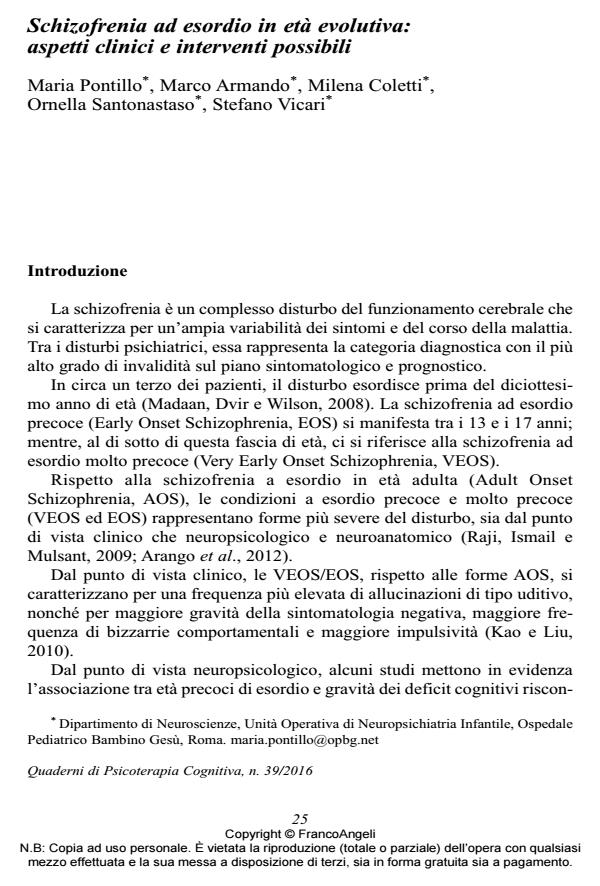Very Early and Early Onset Schizophrenia: Clinical characteristics and implications for interventions
Journal title QUADERNI DI PSICOTERAPIA COGNITIVA
Author/s Maria Pontillo, Marco Armando, Milena Coletti, Ornella Santonastaso, Stefano Vicari
Publishing Year 2016 Issue 2016/39
Language Italian Pages 17 P. 25-41 File size 115 KB
DOI 10.3280/QPC2016-039003
DOI is like a bar code for intellectual property: to have more infomation
click here
Below, you can see the article first page
If you want to buy this article in PDF format, you can do it, following the instructions to buy download credits

FrancoAngeli is member of Publishers International Linking Association, Inc (PILA), a not-for-profit association which run the CrossRef service enabling links to and from online scholarly content.
Very Early (VEOS) and Early Onset Schizophrenia (EOS) represent more severe forms of the disorder, with clear differences from Adult Onset Schizophrenia (AOS). Indeed, VEOS/EOS, compared to AOS, show higher rates of premorbid abnormalities, longer duration of untreated psychosis, and poorer outcomes. Moreover, higher levels of auditory hallucinations, negative symptoms, bizarre behavior and more severe cognitive deficits characterize VEOS/EOS. In addition, because the onset of the disorder occurs during a critical developmental period, individuals with VEOS/EOS are restricted in the attainment of developmental and social milestones. They are subsequently subjected to additional interruptions in education, employment, and peer relationships, which further complicated recovery. Overall, because individuals with VEOS/EOS have specific developmental issues that are very different from those of individuals with AOS, better-designed interventions that are tailored to this age group and account for their developmental differences are needed.
Keywords: Early onset schizophrenia, Clinical Staging Model, cognitive-behavioral therapy
Maria Pontillo, Marco Armando, Milena Coletti, Ornella Santonastaso, Stefano Vicari, Schizofrenia ad esordio in età evolutiva: aspetti clinici e interventi possibili in "QUADERNI DI PSICOTERAPIA COGNITIVA" 39/2016, pp 25-41, DOI: 10.3280/QPC2016-039003